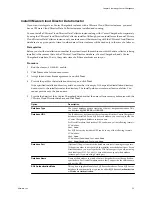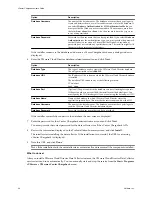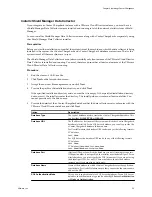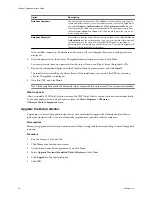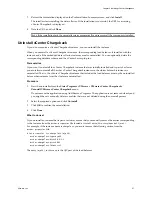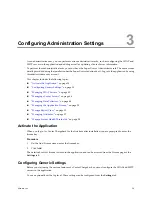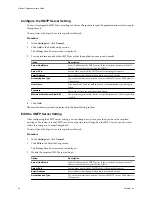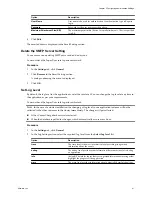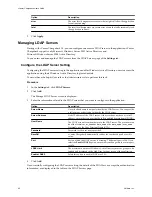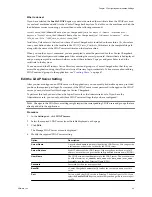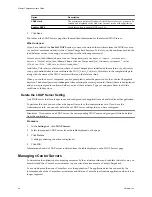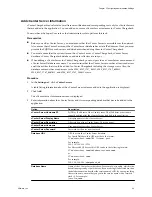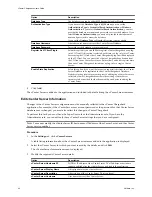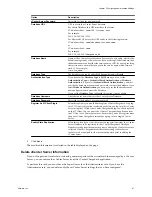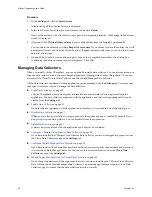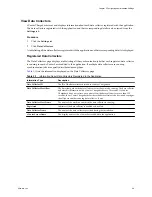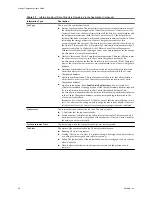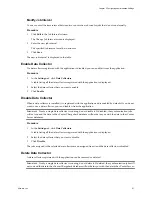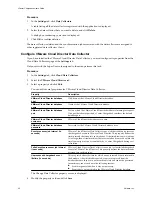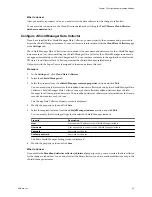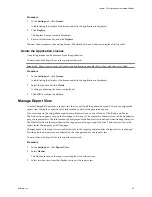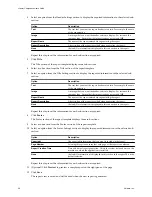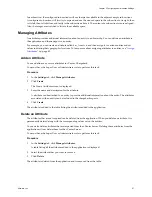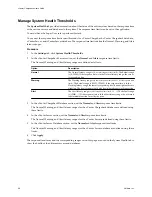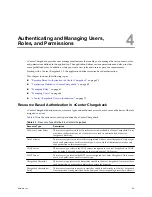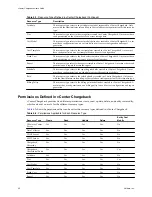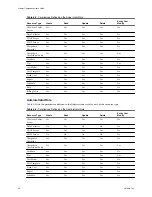
Option
Description
vCenter Server Password
Password for the user name entered.
Database URL
URL to access the vCenter Server database.
For Oracle Database, this URL must have the format:
IP address/host name:TNS listener port
For example:
123.123.123.123:1521
For Microsoft SQL Server, this URL can be in the following formats:
IP address/host name\database instance name
or
IP address/host name
For example:
123.123.123.123\chargeback_db
Database Name
Name of the vCenter Server database. For example,
vim_vcdb
, which is the
default name given by vCenter Server. If you are using Oracle Database, then
the database name can be either the service name or SID. If you are providing
the service name, ensure that you prefix the service name with a forward
slash (/). For example:
/
service_name
Database Type
The database type can be either SQL Server (default) or Oracle.
Authentication Type
If you have set the Database Type to SQL Server, you can set the
Authentication Type to Credential Based Authentication or Windows
Authentication. If you select Credential Based Authentication, you must
provide the database user name and password to access the database. If you
select Windows Authentication, you need not provide the database user
name and password to access the database.
If you set the Database Type to Oracle, this option is not available.
Database Username
A database user name to access the vCenter Server Database.
Database Password
Password for the database user name entered.
Register As VI Client Plugin
Select this option if you would like to register vCenter Chargeback as a plug-
in to VI Client. If this option is selected, each time you log in to this vCenter
Server using the VI Client, the vCenter Chargeback plug-in will be displayed
on the VI Client. You can access the vCenter Chargeback application from
the VI Client as a vCenter Server user. Ensure that you do not register more
than one vCenter Chargeback instance as a plug-in for a single vCenter
Server.
Enable Stats Replication
Select this option if you want the resource usage statistics from the vCenter
Server Database to be replicated in the vCenter Chargeback Database.
Statistics starting from three months prior to adding the vCenter Server are
collected. vCenter Chargeback considers the existing vCenter Server
inventory to have existed for the three month period prior to adding the
vCenter Server.
4
Click Save.
The modified information is reflected in the table displayed on the page.
Delete vCenter Server Information
If you no longer want to calculate costs and generate reports for the virtual machines managed by a vCenter
Server, you can remove the vCenter Server from the vCenter Chargeback application.
To perform this task, you must have the Super User role or the Administrator role. If you have the
Administrator role, you can delete only those vCenter Server settings that you have configured.
Chapter 3 Configuring Administration Settings
VMware, Inc.
47

